The 20+ Must-Know Backlink Types
The quality of your backlink profile is arguably one of the most important factors that Google looks at when determining how to rank your website. In the world of SEO, building high-quality backlinks is the key that unlocks previously untapped visibility and search rankings on your website.
That being said, most SEO practitioners spend months, if not years, perfecting the following strategies: developing relationships with website owners, creating effective content strategies, profiling relevant resources, building links and so forth. SEOs also often pay a lot of attention to diversity, so to naturalize your link building strategy for Google, you’ll need to get different types of backlinks. This is why you’ll need to know what kinds of links there are and which ones to use. Since here isn’t one backlink type, the best strategy for you will depend on the backlink classification of your choosing.
Download our free ebook to find out how AIOs changed after rollout and sign up to SE Ranking’s news and SEO tips digests!
Click the link we sent you in the email to confirm your email
To help you figure this out, we have divided these backlink types into three groups based on different criteria:
- By link building process
- By page position
- By link attribute
You may find that backlink analysis can be challenging at first, but SE Rankings’ tool for backlink search can help you find and check your website’s backlinks. It provides a complete list of backlinks for any website and also analyzes the backlink profile according to the following metrics: Domain Trust, the total number of anchors as well as the full list of them, referring domains and backlinks, the ratio between dofollow and nofollow backlinks, and many more.
Let’s dive deeper to see which backlink types are worth your while.
Organic backlinks: Naturally placed links by authors who find your content valuable.
Guest post backlinks: Obtained by contributing content to other relevant websites.
Digital PR backlinks: Included in content that promotes your brand or in newsworthy or viral content that attracts other websites’ attention.
HARO backlinks: Earned by providing expert responses on HARO and similar platforms.
Link insertions: Added to existing content on other websites.
Reciprocal backlinks: Exchanging backlinks with other websites, including services-for-links or three-way link exchanges.
UGC backlinks: Added in user-generated content like comments, forums, and social media.
Business listing backlinks: Created by listing your business on directories and catalogs.
Webinar, video, and podcast backlinks: Gained by participating in webinars, videos, or podcasts.
Badge backlinks: Earned by receiving digital badges from other websites.
PBN backlinks: Obtained from a network of websites owned by a single entity.
Backlinks by attribute: Dofollow/nofollow links that pass or don’t pass link juice and authority, ugc links, and sponsored backlinks indicating paid placement.
Backlinks by location: In text content, inside images, in the footer, and in the widget
Backlink type based on the link building process
Let’s start by looking at the various backlink types associated with specific link building strategies. Each of these backlinks has its own strengths and weaknesses, and it’s important to understand how they work in order to create an effective link building plan.
1. Editorial backlinks
An organic backlink (editorial link) is a link placed naturally by an author on a website. Links like these are beneficial for the author’s audience and add value to the website. Organic links are the safest link-building method and Google recommends them the most. To see for yourself, refer to Google’s guidelines.
The number one way to get natural, relevant backlinks to your website is to create valuable, viral or evergreen content thatr other website creators want to link to. It can be:
- 📝 Studies with your company’s unique stats or based on users’ surveys.
- 📊 Infographics with images, figures, and statistics.
- 🎙 Video or text interviews with qualified specialists or famous people.
- 💡 Ultimate guides providing useful reference material for bloggers and journalists.
Backlink examples like the ones in the screenshots below are typically editorial links.
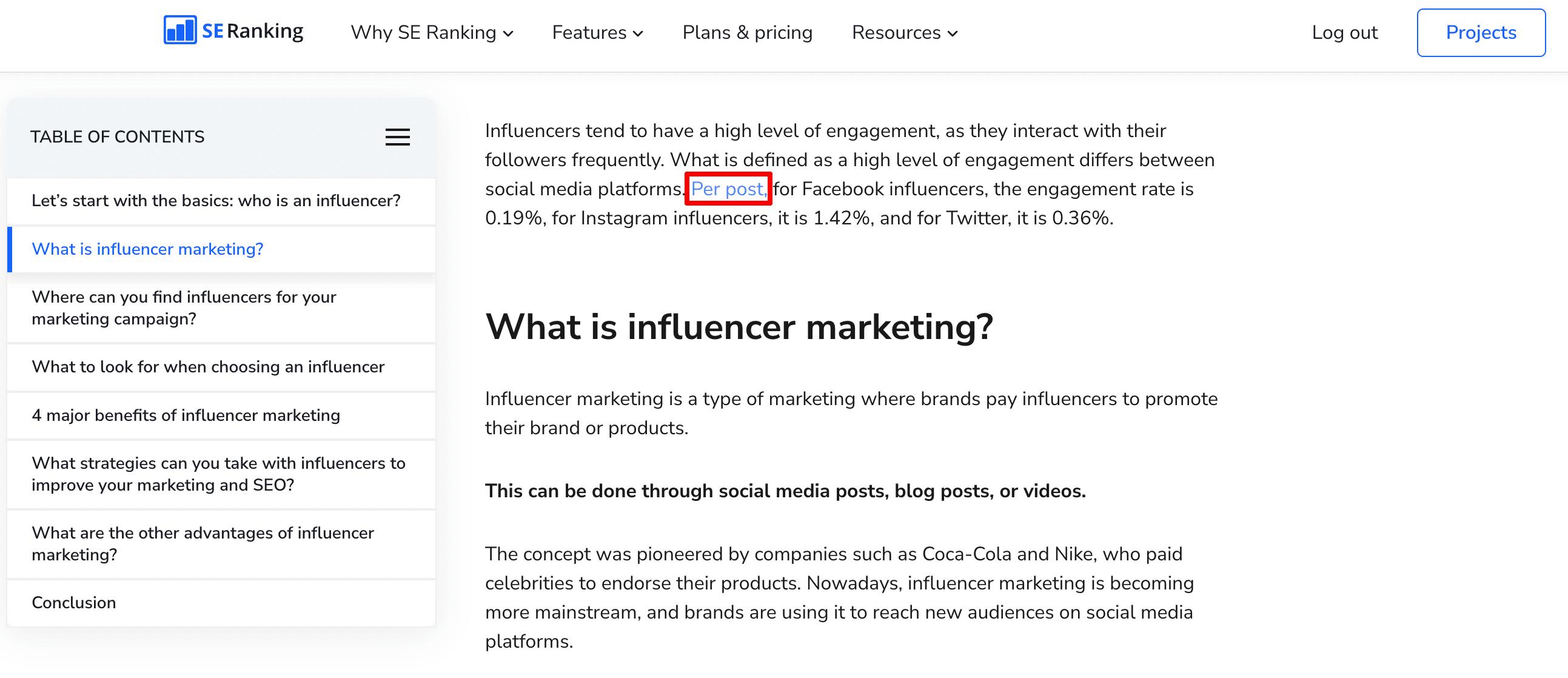
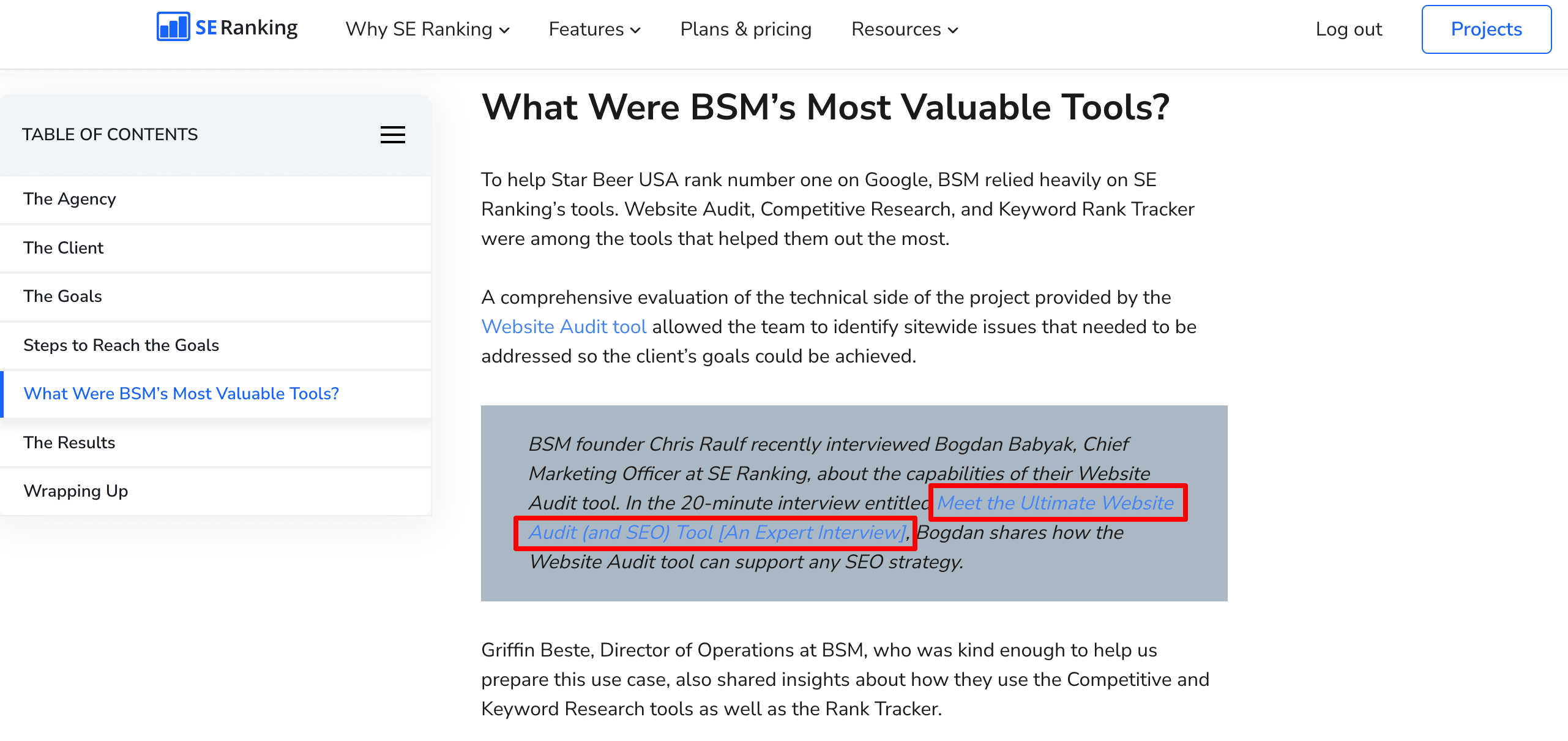
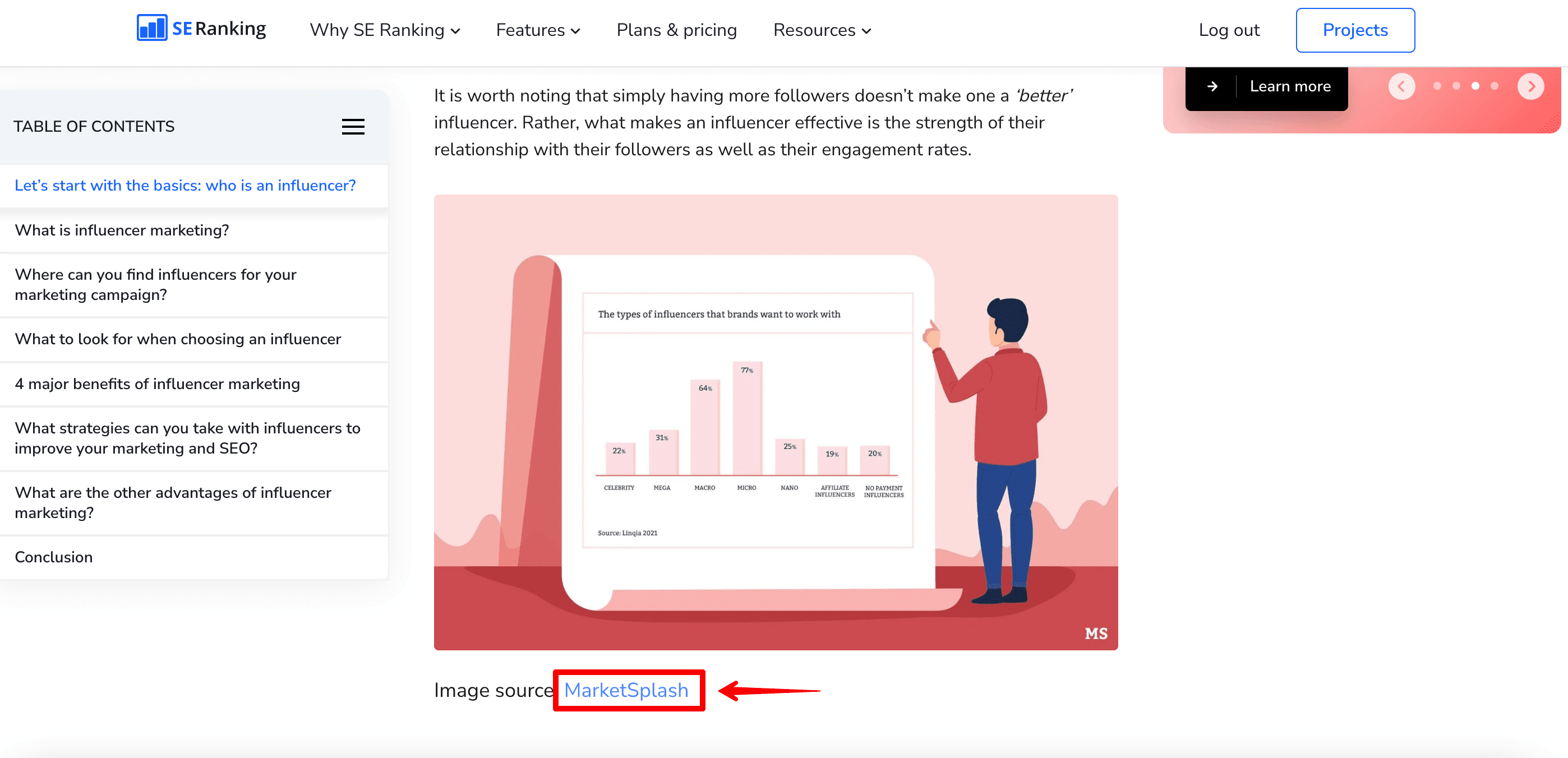
2. Guest post backlinks
To get organic backlinks, your primary concern should be your website content. Guest post links, on the other hand, are a little different, as building relationships with other website owners becomes essential. To get guest post backlinks, reach out to people behind websites that are relevant to your business and who might be interested in your content.
Links from guest posts are an integral part of almost any link building strategy. These outreach backlinks not only benefit SEO (if all of Google’s recommendations are considered), but they can also generate referral traffic by being placed on websites that are relevant to your business.
Guest post links can usually be found in the bio section of a page, but sometimes they can appear in pillar content. One of the most common requirements, in this case, is that your backlink brings value to the article without being promotional.
Let’s see this function at play in the following case:
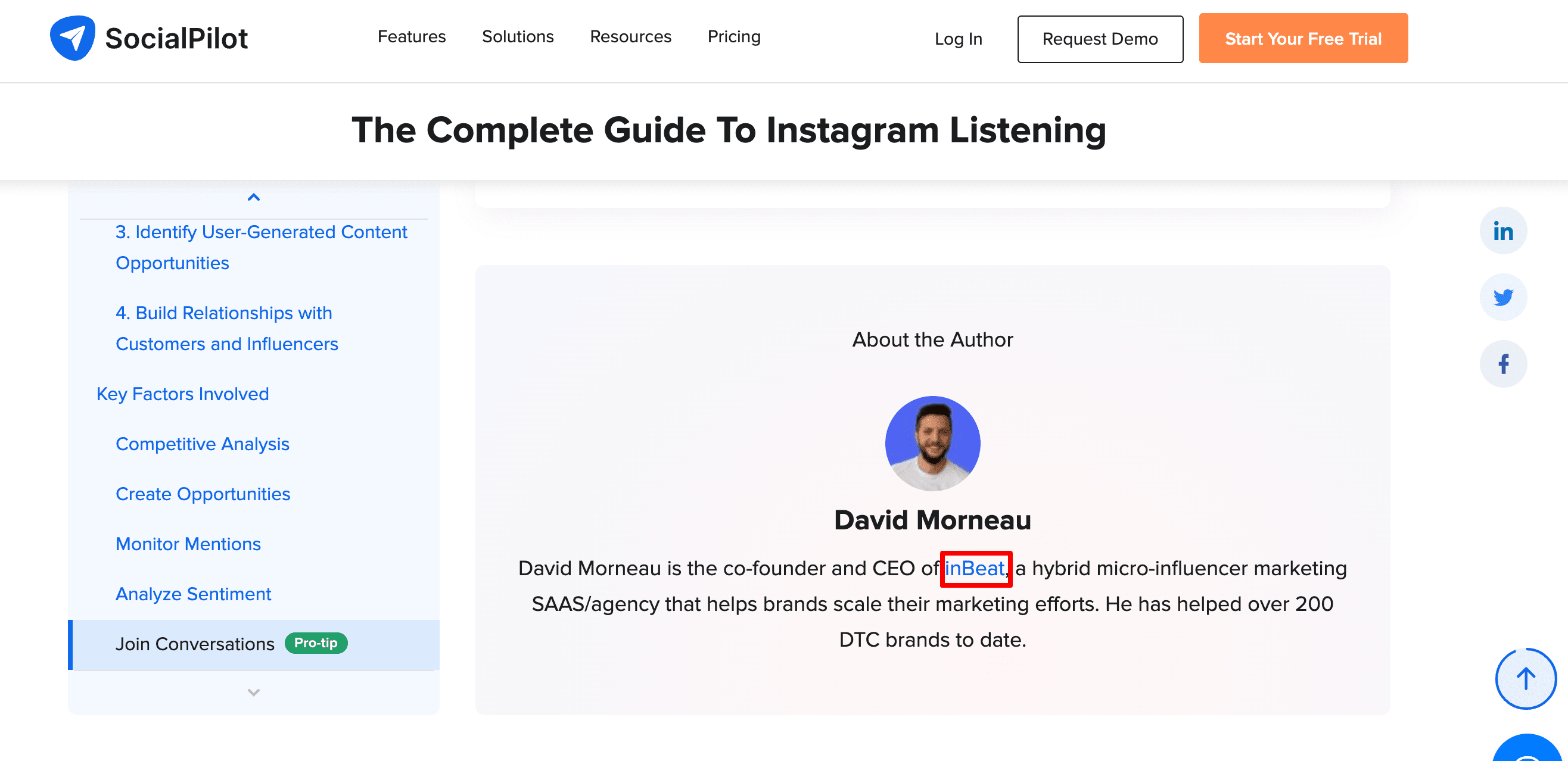
Gaining guest post backlinks is kind of like playing a challenging game where you must overcome several stages to successfully place one. The stages are as follows: finding potential websites that are interested in you as a contributor, doing detailed research for guest post topics, creating compelling outreach emails, writing the article, and many more. The process can be a bit daunting, but the backlinks you get will bear fruit as long as you build the right guest blogging strategy. To learn more about guest blogging, read our comprehensive guide.
3. Digital PR backlinks
These links are typically included in content where your brand is mentioned. Usually, such materials are issued to the media to announce news, events, or other important information about a company or your industry to showcase the company’s topic expertise.
The most popular form of content for these backlinks is press release articles. Content of this type might announce the launch of a platform’s new tool or the opening of a new sales office. None of this matters, though, if the news websites you reach out to aren’t interested enough in your story to share it. For instance, launching a free course or sharing viral news is often more compelling than promoting a commercial offer or product.
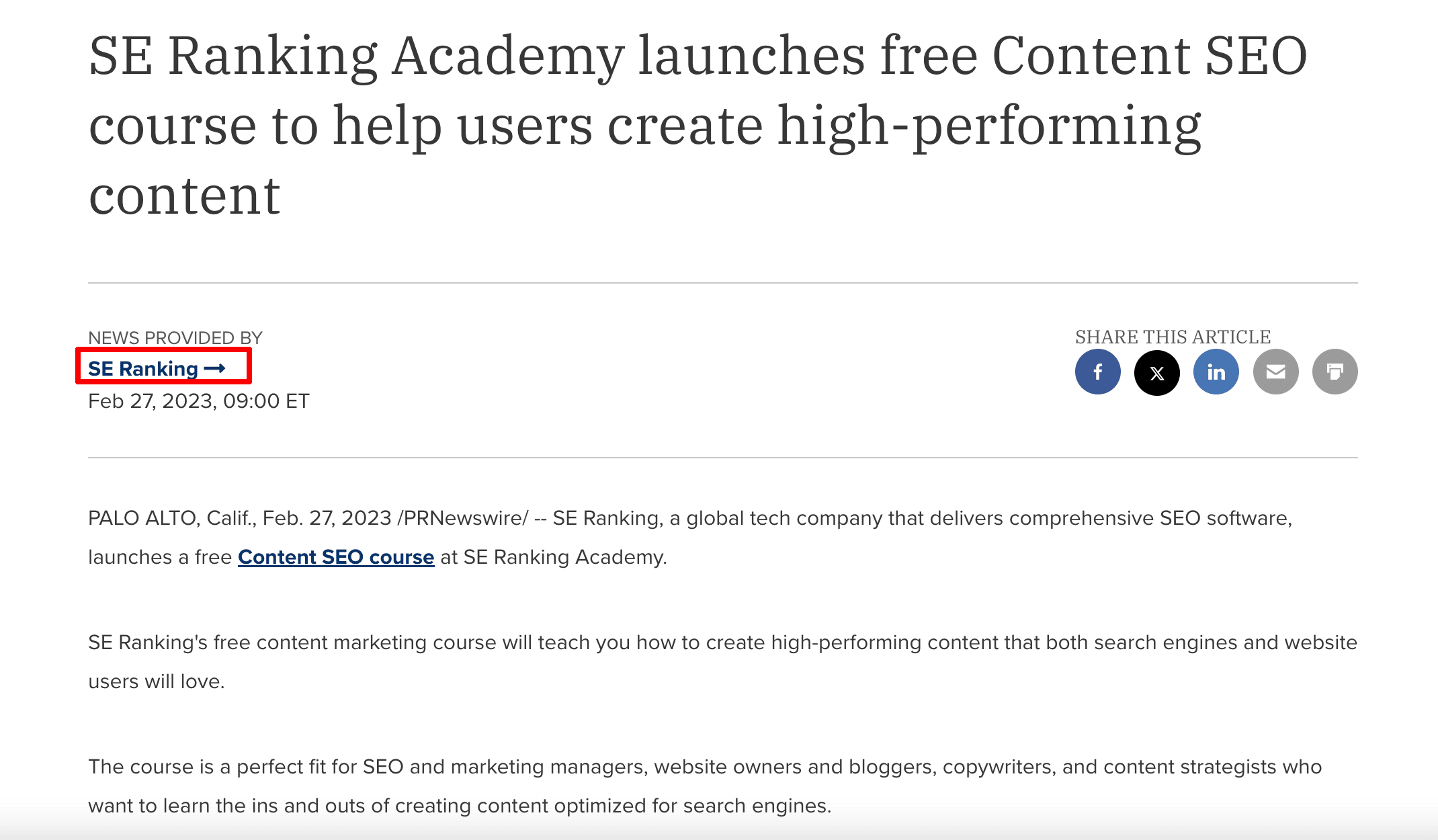
Other popular types of content that include these kinds of backlinks are research studies, pressing industry news, or other viral content that interests the target audience. This approach not only helps you secure a backlink but also establishes your brand as an expert in the niche. Here is a striking example of a digital PR link:
We conducted research on AIO and pitched it to journalists, resulting in numerous mentions (and high-quality backlinks) on their websites.
Links from press releases are a popular practice for promotion but not for link building because Google passes links in press releases and classifies them as unnatural. To avoid falling under Google’s sanctions, these links are generally set to nofollow. However, viral news and trending content can bring you dofollow links. This means you should still focus on backlinks of this type.
Also, digital PR links are great for brand awareness, referral traffic and public relations, even if they’re not necessarily effective for link building. They are a great indirect method for getting organic backlinks since the media exposure you get can help you reach relevant audiences who will then link to your website.
4. HARO backlinks
These backlinks are obtained through platforms that connect journalists and content creators with experts. These experts help enhance content by providing creators with stats, unique tips, authoritative quotes, and more.
Some of the most popular platforms are HARO (Connectively), Help a B2B Writer, and Qwoted.
Depending on the platform, journalists or content creators can either post a request on the platform and wait for experts to respond or contact a specific expert directly. The expert’s quote is published on the website, and a link to the expert’s resource is included alongside the quote.
So, by providing answers to queries, you can earn valuable backlinks on authoritative and relevant websites.
Here’s an example of a link we received and how we got it:
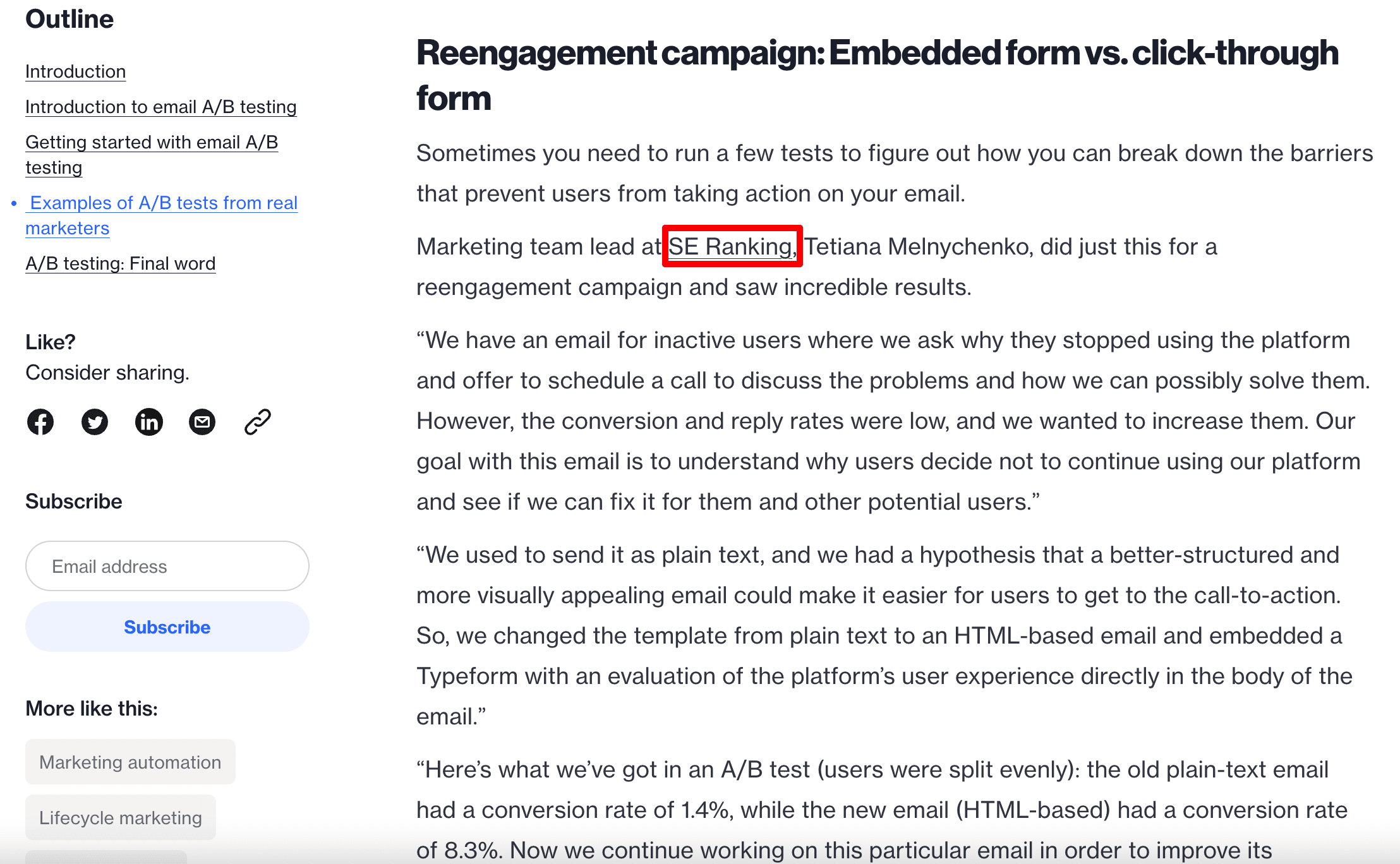
This link was obtained through the B2B Writer platform, which allows content creators to send email requests to experts in specific niches. After getting the request, we decided that our email marketing manager was the best person to provide a response. We reached out to her for a quote and sent the completed response to the email address given in the request. After the writer followed up with us to clarify a few details, we received the final backlink with the quote.
If you want to get backlinks using HARO (Connectively) and similar platforms, the key is to write a strong pitch tailored to the specific resource and establish yourself (or your colleague) as an expert in your niche. We have prepared a guide on how to create the perfect HARO pitch. Check it out to learn all the nuances of crafting it and to maximize the number of positive responses (= potential backlinks) you receive.
5. Link insertions
Link insertion involves adding a relevant link from your website to another site’s existing content. To get this type of backlink, select relevant pages to place the backlink. The next step is to reach out to these websites with a pitch letter. Use this pitch to describe how your link can provide more context to the reader and improve their experience overall.
For instance, if your brand is about home improvement and you come across a website with a blog post about home renovation tips, contact the website owner and request that your relevant link be included in the content.
Getting these types of links organically (for free) isn’t easy. You must be able to convince the website owner that your article can add value to their content.
6. Replacing broken backlinks
This backlink method involves finding dead links on your competitors’ websites and replacing them with links to your content.
SE Ranking’s Broken Backlink Checker makes it easy to identify backlinks that no longer exist.
To use it, go to the Backlink Checker tool, enter the competitor’s domain, and push Search. Then, click on the number of broken backlinks in the report to see the full list, including referring pages, target URLs, traffic, toxicity score, and more.
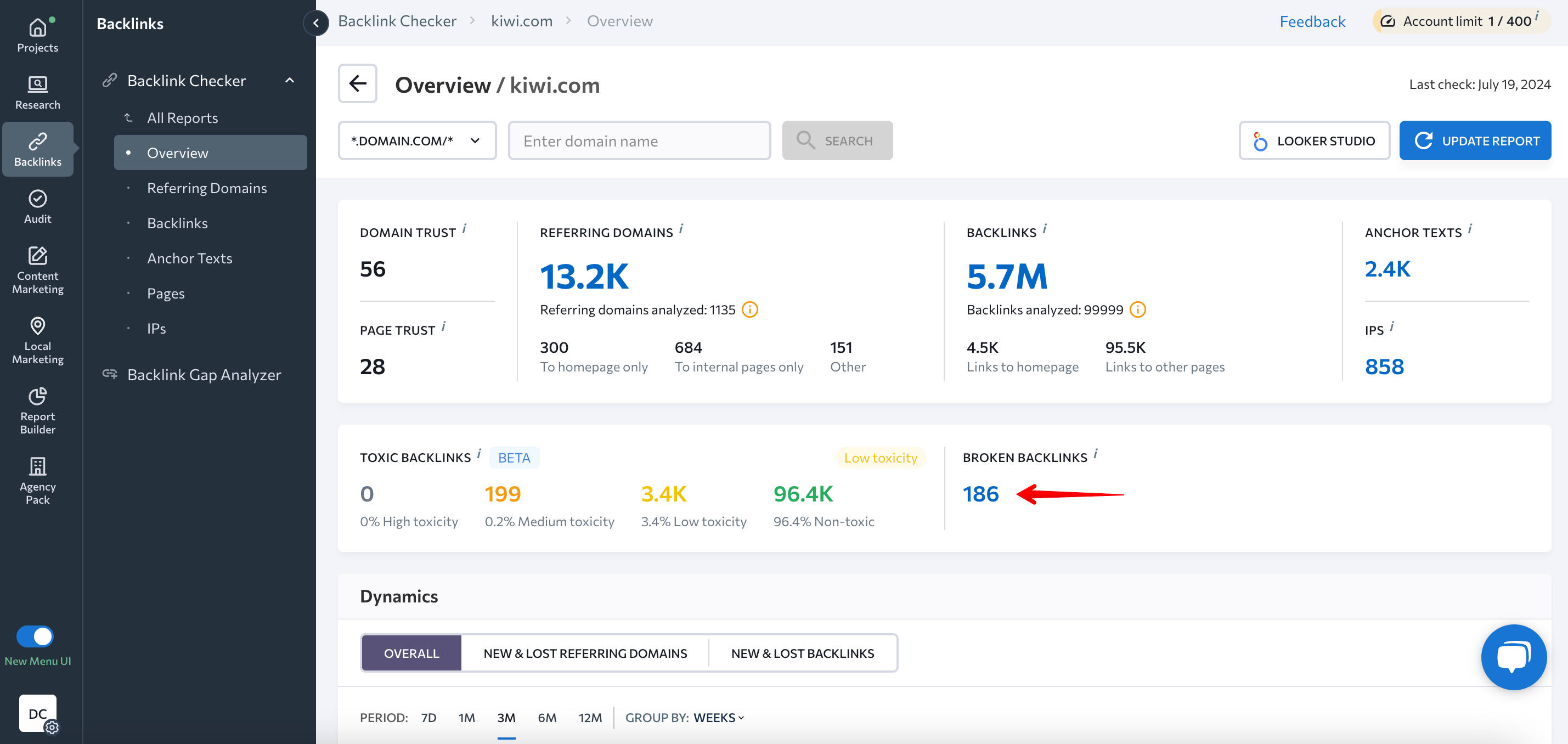
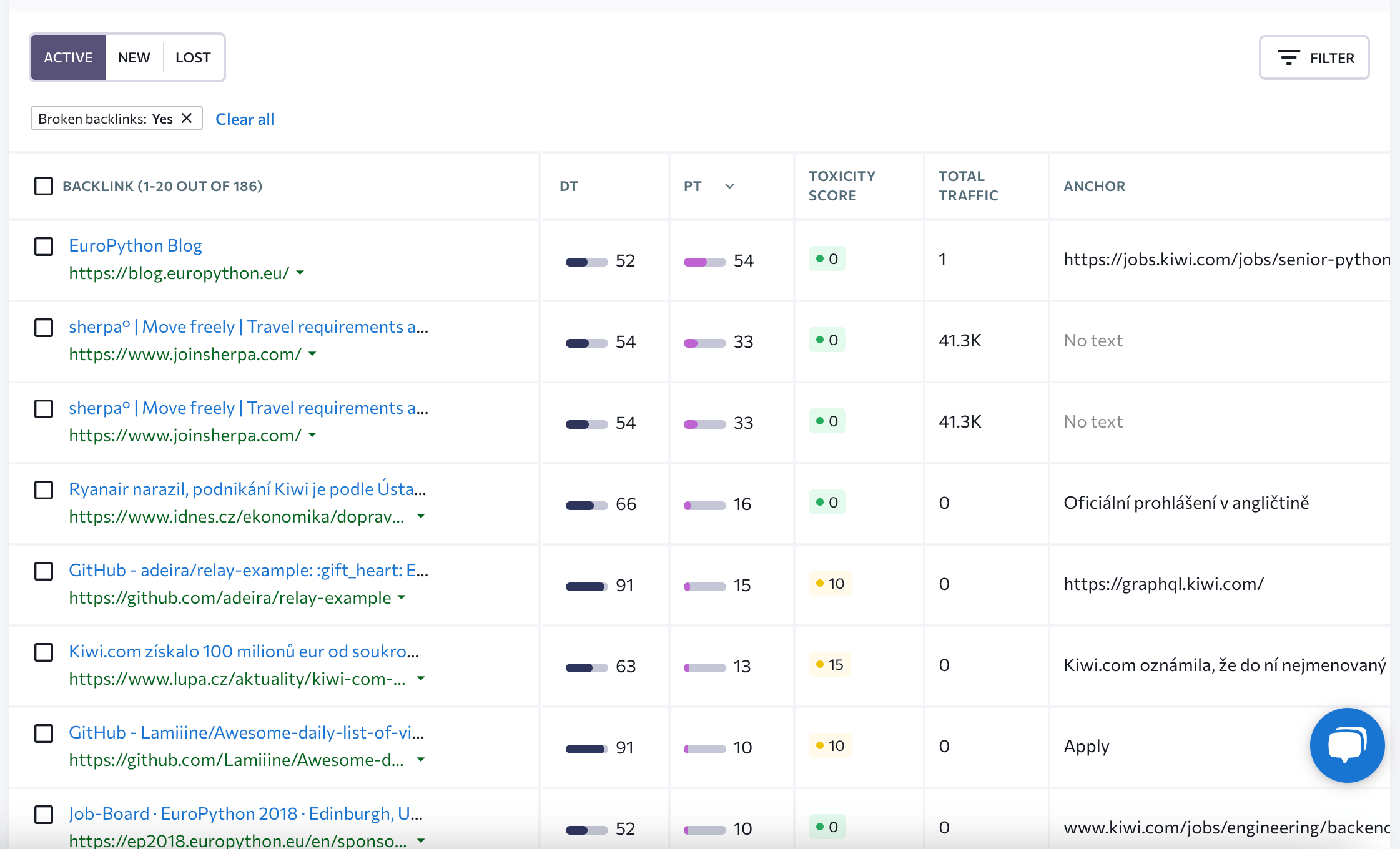
Here is a quick breakdown of how to get these kinds of backlinks:
- Select a competitor with a strong backlink profile to analyze their broken links.
- Choose the competitor’s referring pages with the most traffic.
- Select or create content with potential to replace the dead backlink.
- Reach out to website owners to replace the old link with yours.
7. Reciprocal backlinks
This is an exchange-related method, where one domain adds a backlink to your website in exchange for getting a backlink from your site.
The key steps of this method include finding relevant partner sites, agreeing on the link exchange, and then inserting the links. The main goal is to exchange links with relevant websites that can be valuable to your audience and to ensure that the reciprocal links are implemented naturally.
Keep in mind that search engines currently have advanced algorithms that can detect artificial link patterns, including excessive reciprocal linking. Reciprocal links can still improve a site’s SEO, but use them thoughtfully to avoid penalties related to manipulative practices. Do not use this type of backlink just for the sole purpose of rankings. Your number one focus should be to provide value.
8. Links received in exchange for a service
As part of a mutually beneficial agreement, some companies get backlinks in exchange for services such as website development, web design, and server hosting. These types of backlinks are often added to the footer.
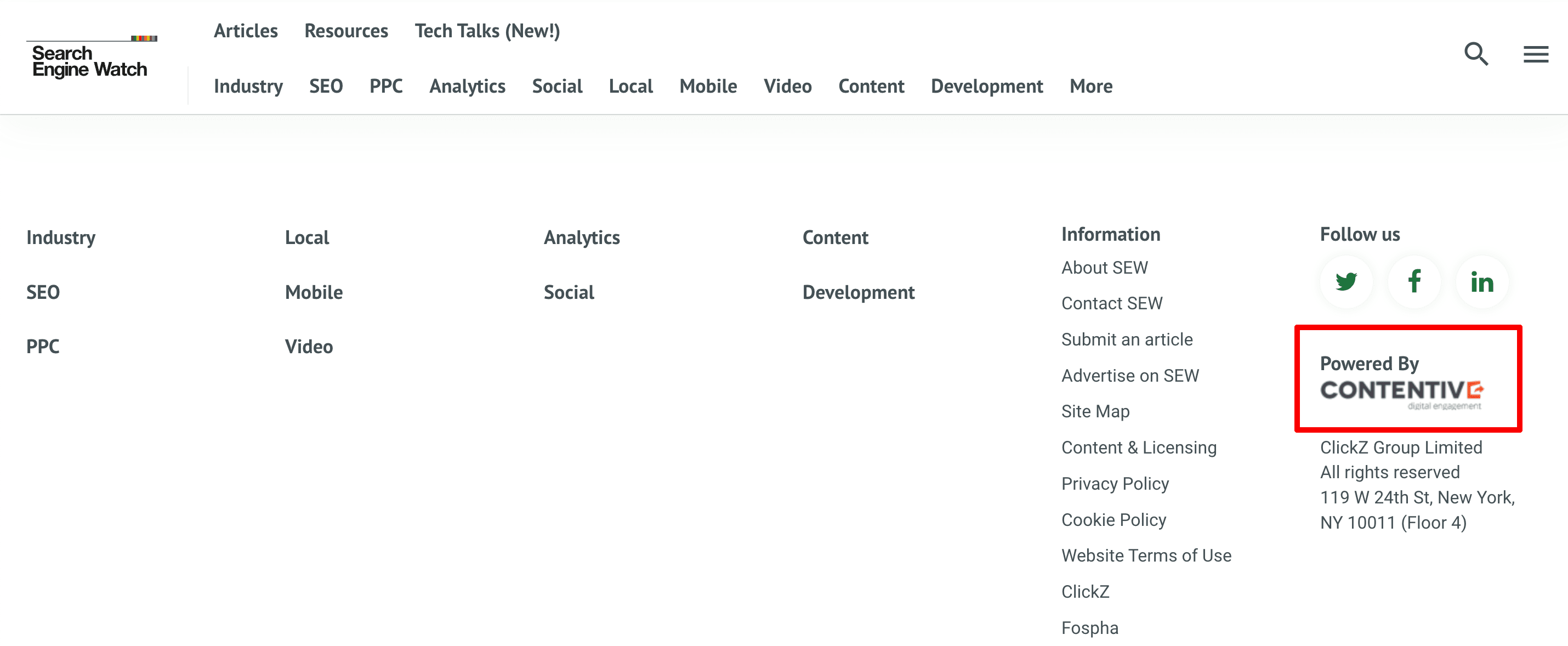
Some web studios may offer discounted rates for website design, while some SaaS companies may provide discounts to clients on their next subscription in exchange for a backlink.
There are numerous options available, but keep in mind that exchanging goods or services for links may be considered link spam according to Google’s guidelines. You absolutely must be careful with this backlink type.
9. UGC backlinks
You can find these backlinks on comments on different websites, social media, posts on forums, and Q&A websites like Quora, Reddit or niche platforms.
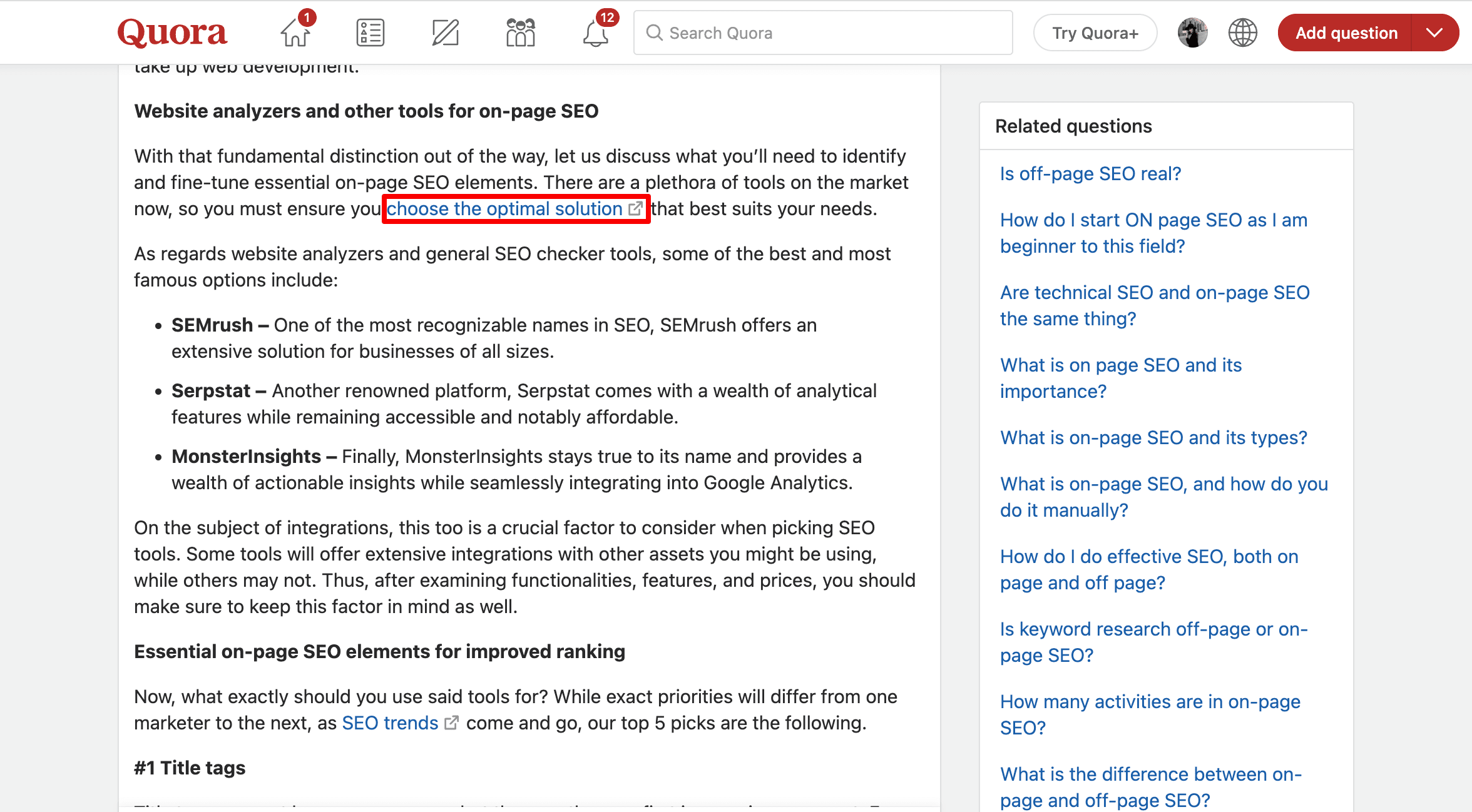
To add links like these to forums, SEOs search for topics relevant to the company’s niche and create separate posts. They also respond to questions by providing a link to the most relevant site page for that topic. This backlink type is also frequently found in comments on social media like Facebook and LinkedIn, where topics surrounding these questions are often discussed. You can also add these links in comments under blog posts on various sites.
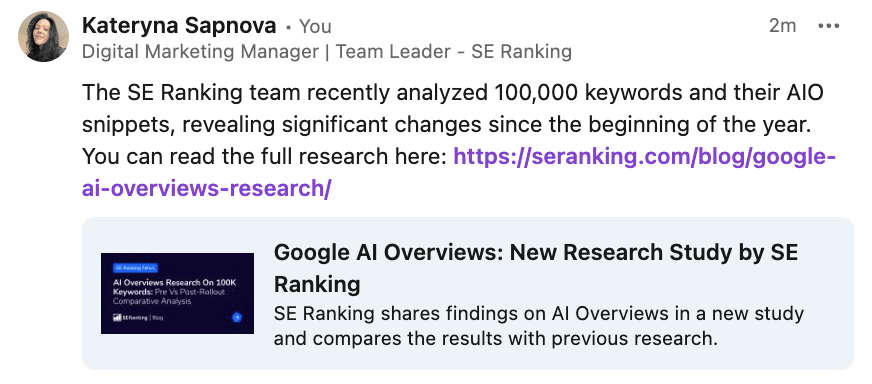
Some specialists use targeted keywords to set the appropriate semantic context for their backlinks.
The primary goal of getting backlinks like these is to increase brand mentions and boost your brand’s reputation.
10. Business listing backlinks
This method involves creating a profile for your company on business listing sites, catalogs, or industry directories and adding your website’s link to the listing. This type of backlink works especially well for local businesses. Creating profiles in directories is essential if you want to be found by your target audience by location.
Google Business Profile is the most popular platform for companies to add their backlinks. To add yours to it, create a profile with your company’s information, including its name, photos, work hours, address, and your homepage URL. It’s also recommended to include links to your schedule and/or menu (depending on your business niche).
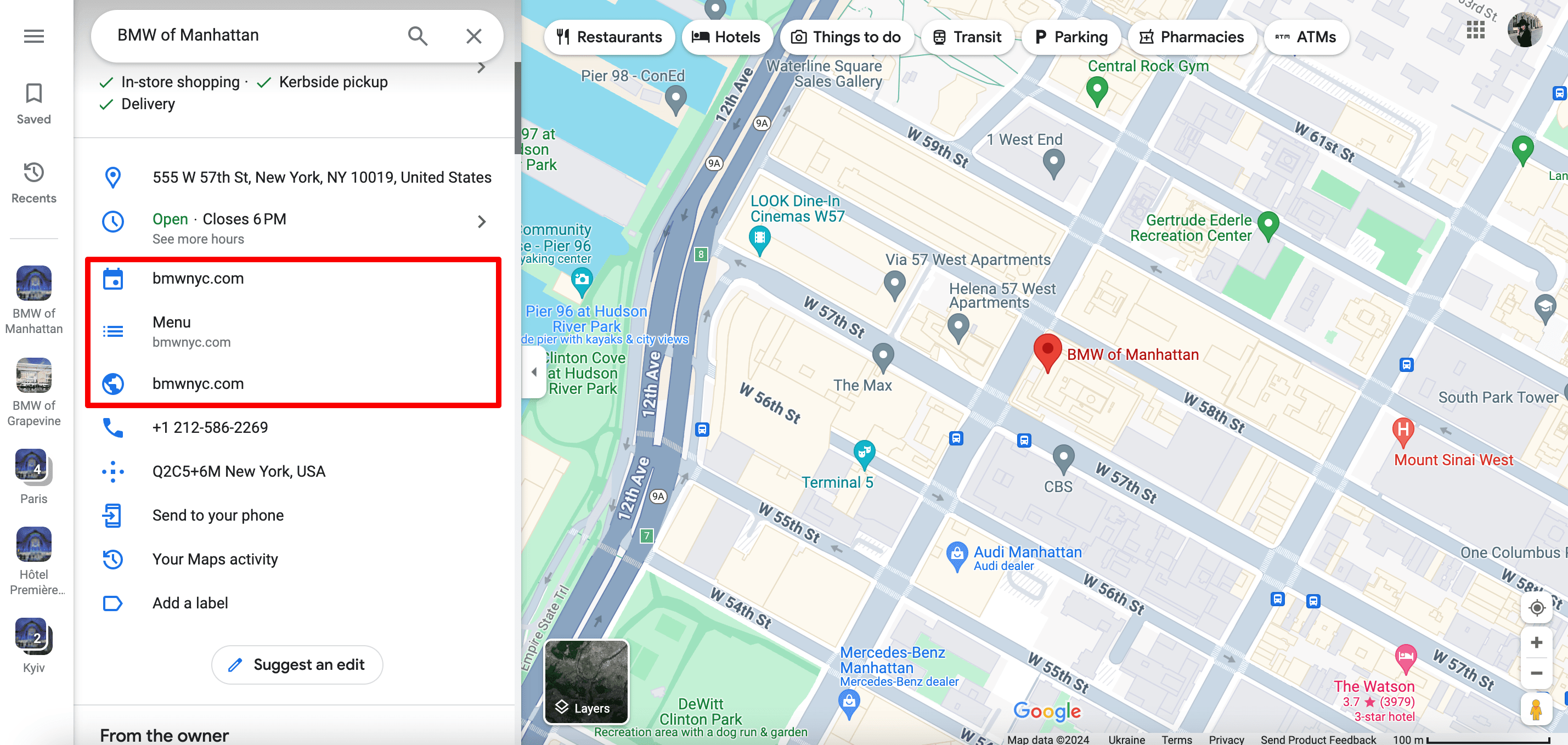
Don’t rely on GBP only. Consider adding backlinks to other popular platforms like Yelp, TripAdvisor, Foursquare, Angi, etc. Don’t forget about niche directories that focus on your services. This ensures you get backlinks from websites that are fully relevant to your business. The profile creation process on these platforms is similar to Google Business Profile’s.
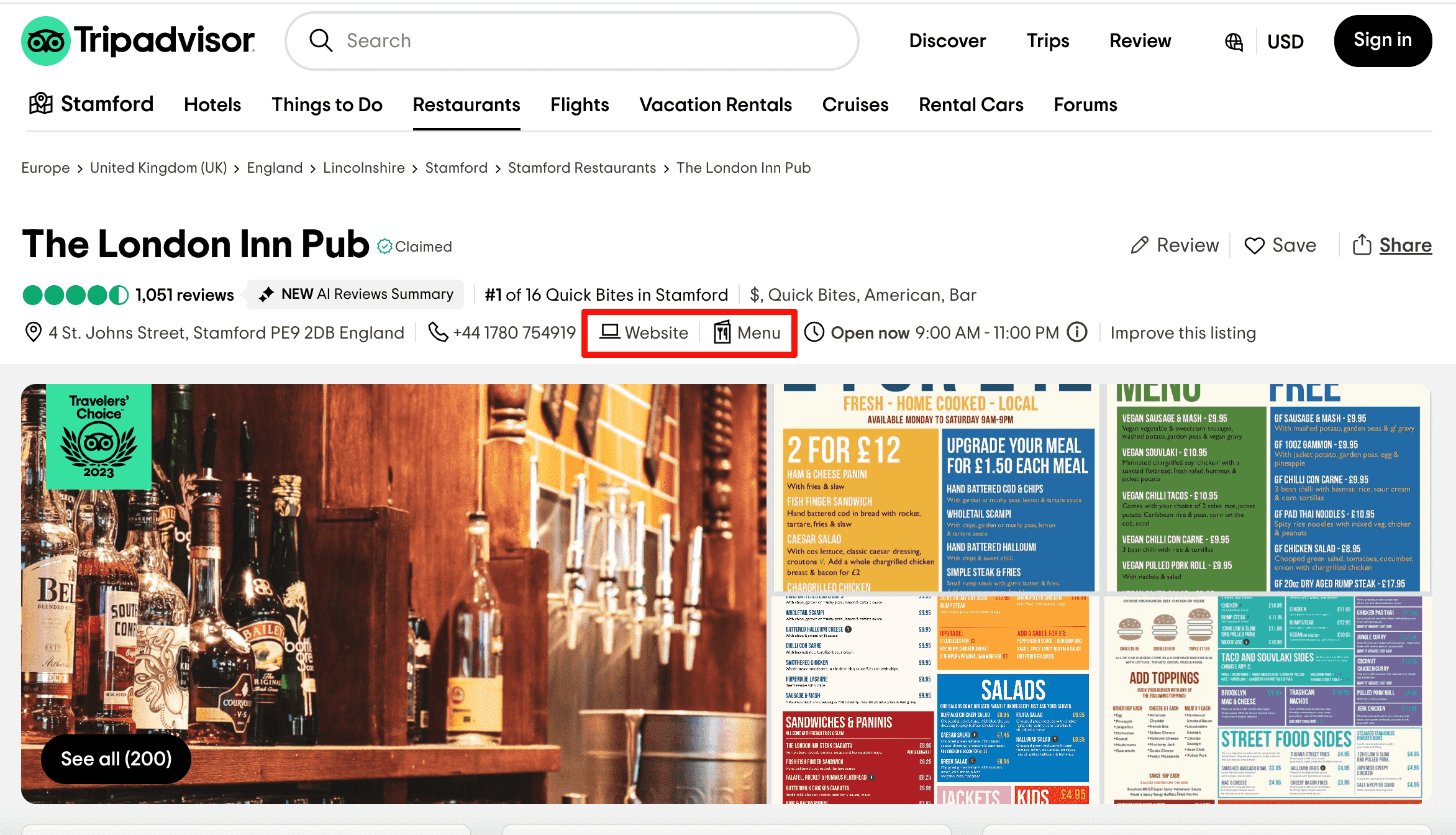
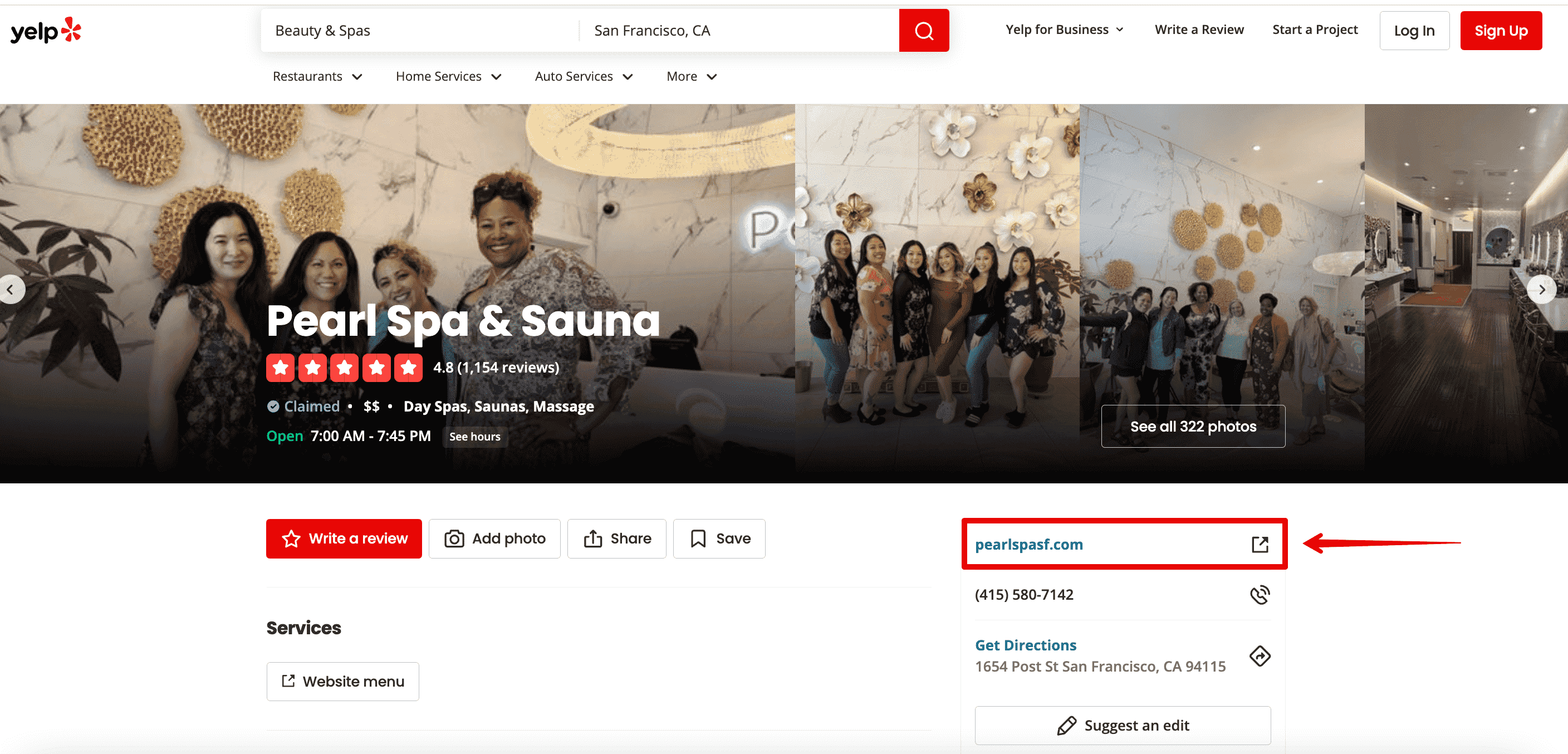
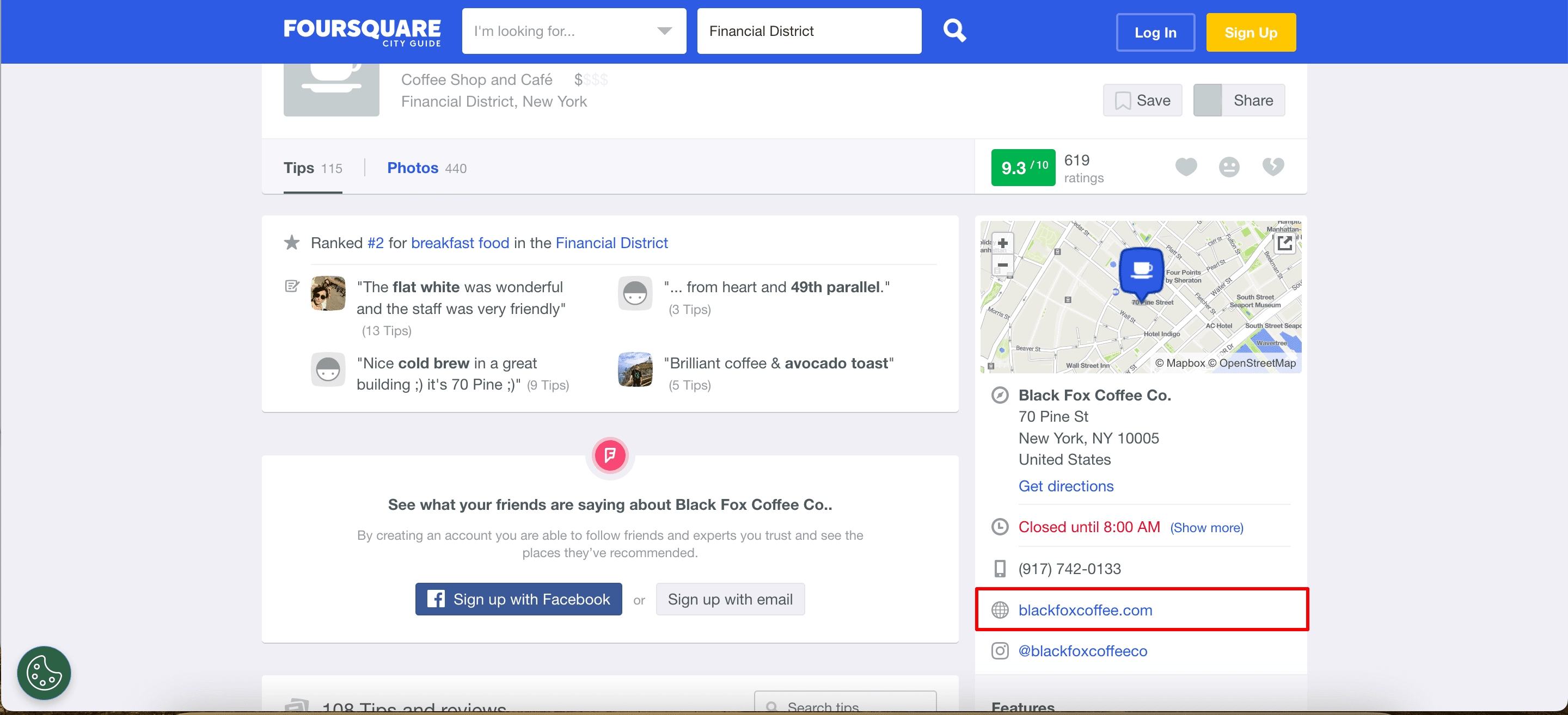
Directory backlinks are all but foolproof and shouldn’t be overlooked. However, be smart about it. Don’t create business profiles in every directory and catalog you find. Stick to authoritative platforms relevant to your niche and location.
11. Webinar, video and podcast backlinks
This type of backlink is also popular among SEOs.
These links are included on webinar landing pages with information about the speaker (a topic expert). The same applies to website mentions on video-sharing platforms like YouTube. Consider doing an interview or participating in a workshop in exchange for a backlink in a video or stream description.
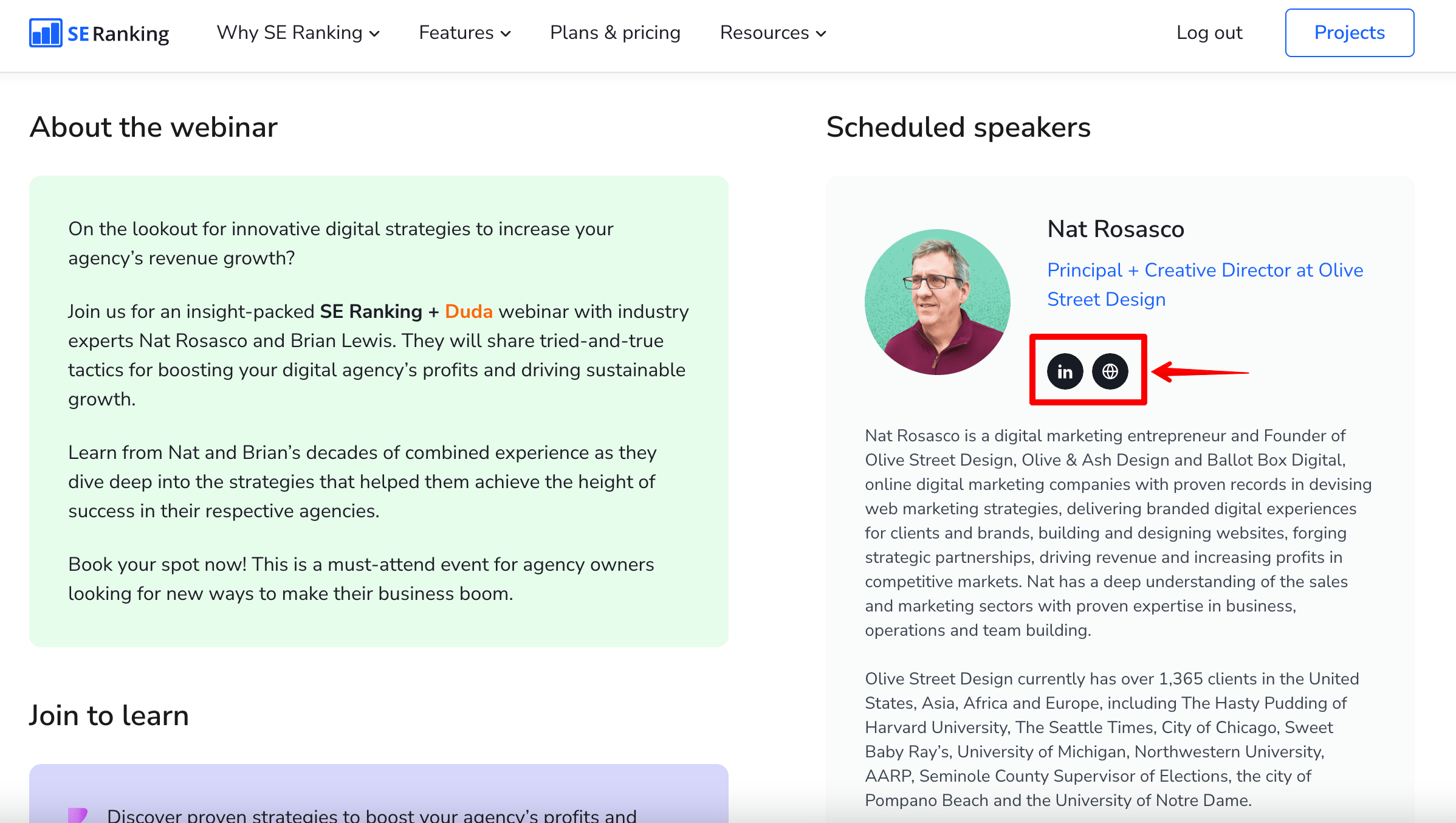
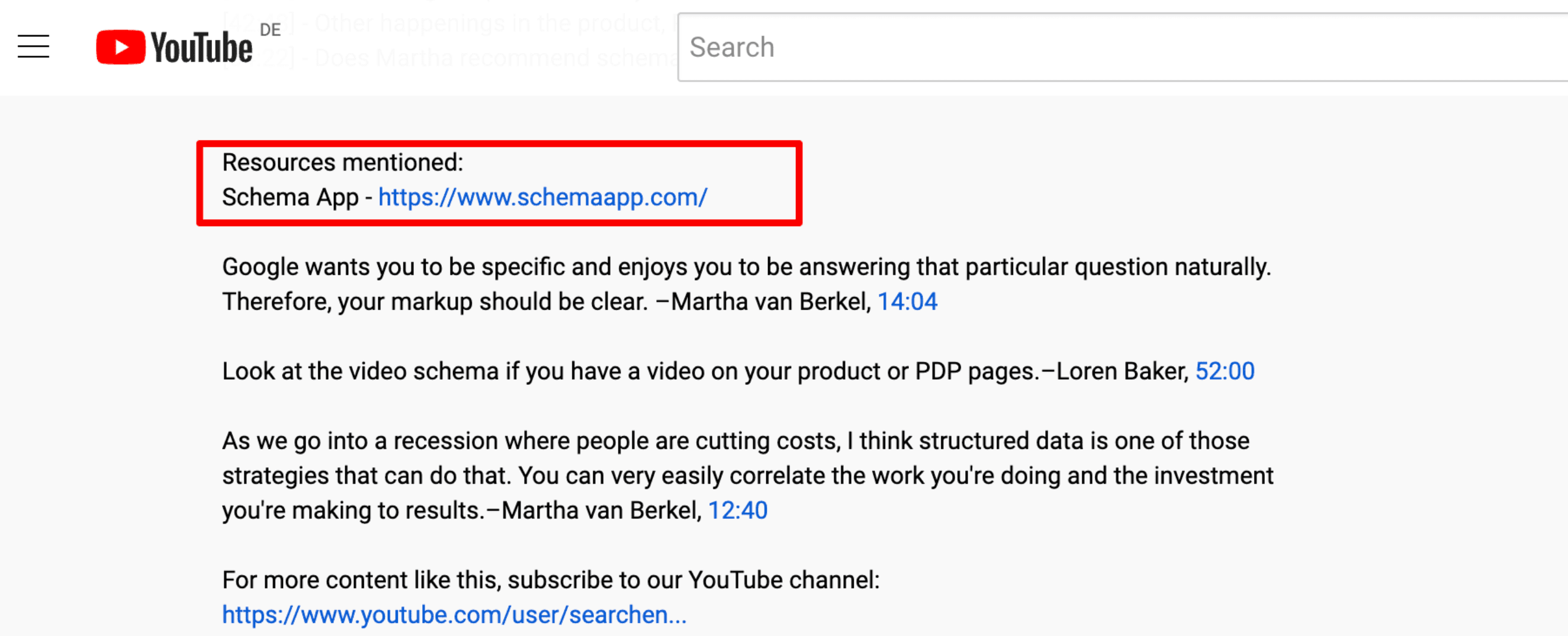
To get these backlinks, you need to reach out to relevant websites or platforms. Send them a pitch letter to participate in their videos, streams, and podcasts.
The tricky part about this method is that it goes beyond negotiating for a link to your site. You’re also participating in a video or podcast, which can be time-consuming and resource intensive. However, if the link gets placed on a reputable and relevant site, it’s worth the investment.
12. Badge backlinks
Badge backlinks are earned when you award other sites with a digital emblem containing a link to your site. These badges are typically given to recognize achievements, certifications, partnerships, or contributions.
This backlink type is especially ideal if you have a review and rating website.
The idea is to design unique badges or awards related to your niche and present them to other websites. These badges enable third-party websites to endorse their credibility and expertise while you get a valuable backlink.
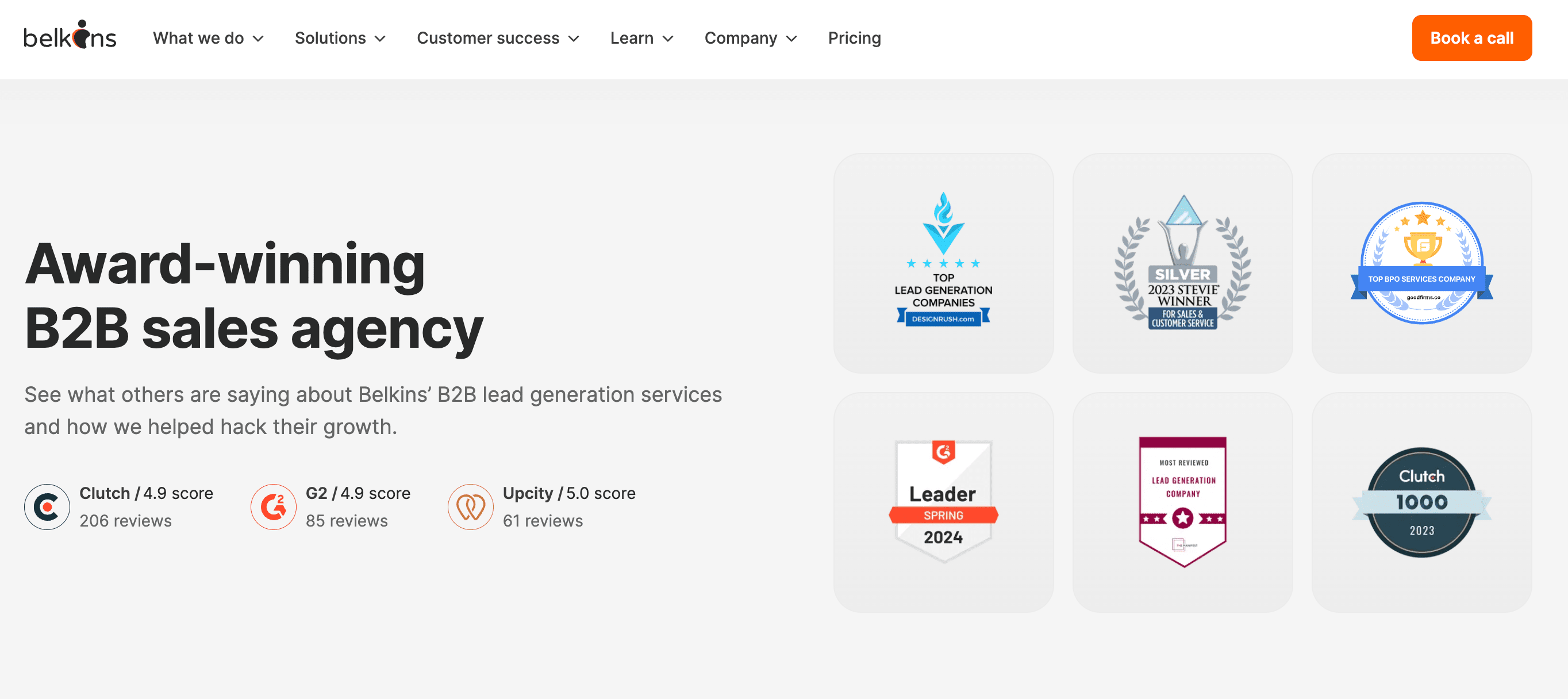
13. PBN backlinks
PBN (Private Blog Network) backlinks are links built from a network of interlinked websites that are often owned by a single pillar website. This backlink type is not as popular today as it used to be, but some SEOs still use it. The main goal of utilizing a PBN, which provides complete control, is to increase the website’s authority.
After purchasing one or more domains, SEO specialists fill them with content. Once the content is indexed, they organically add a backlink to their main website from a PBN site. This backlink can be from the PBN’s blog or homepage, but the key is to avoid repeating the same process on each domain.
PBN links are considered to be a gray hat SEO technique that Google doesn’t recommend because it involves manipulating PageRank. For this reason, and it’s a compelling one, we recommend being extra cautious about getting this type of backlink.
Backlink types based on the link attribute
Now, let’s move on to the next backlink type, which is based on the attribute rel='”. This attribute determines how Google will perceive a particular link, meaning it will either pass it, follow it, or classify it as sponsored or user-generated.
Since 2019, Google has recommended using nofollow, sponsored and ugc attributes so it can better understand how to appropriately analyze and use links within its systems. All link attributes are treated as hints about which links to consider or exclude. Links marked with these rel attributes will generally not be followed, but they are integral to the link building process.
14. Dofollow backlinks
A dofollow, or follow link is just a regular link. It is the most common type of backlink and is only called this to distinguish it from nofollow links.
As you can see, there’s no such thing as rel=”dofollow” in the code because it’s the default behavior and does not require specification:
<a href="/yourbacklink.com">your backlink</a>
This all essentially means that without additional attribute values included in the code, links work as intended by the web, serving as signals that pass link juice and authority to the referred sources.
SEOs typically aim for dofollow backlinks because they tend to bring the fastest results in terms of improving website rankings. Still, it’s probably not a good idea to have a link profile composed solely of dofollow links because Google might identify it as link spam. Below are some other important types of links that should be part of any healthy backlink profile.
15. Backlinks with the rel=”nofollow” attribute
Nofollow backlinks are links with an HTML tag of rel=”nofollow,” which instructs search engines not to follow the link or pass any link juice or PageRank to the website.
Google introduced the nofollow tag in 2005 to combat spam and prevent link manipulation. Since then, it has become common for websites to use the nofollow tag for certain types of links that may be more susceptible to spam. Such a backlink type is integral to a fair link building strategy. Nofollow backlinks are usually used to avoid endorsing the website you are linking to.
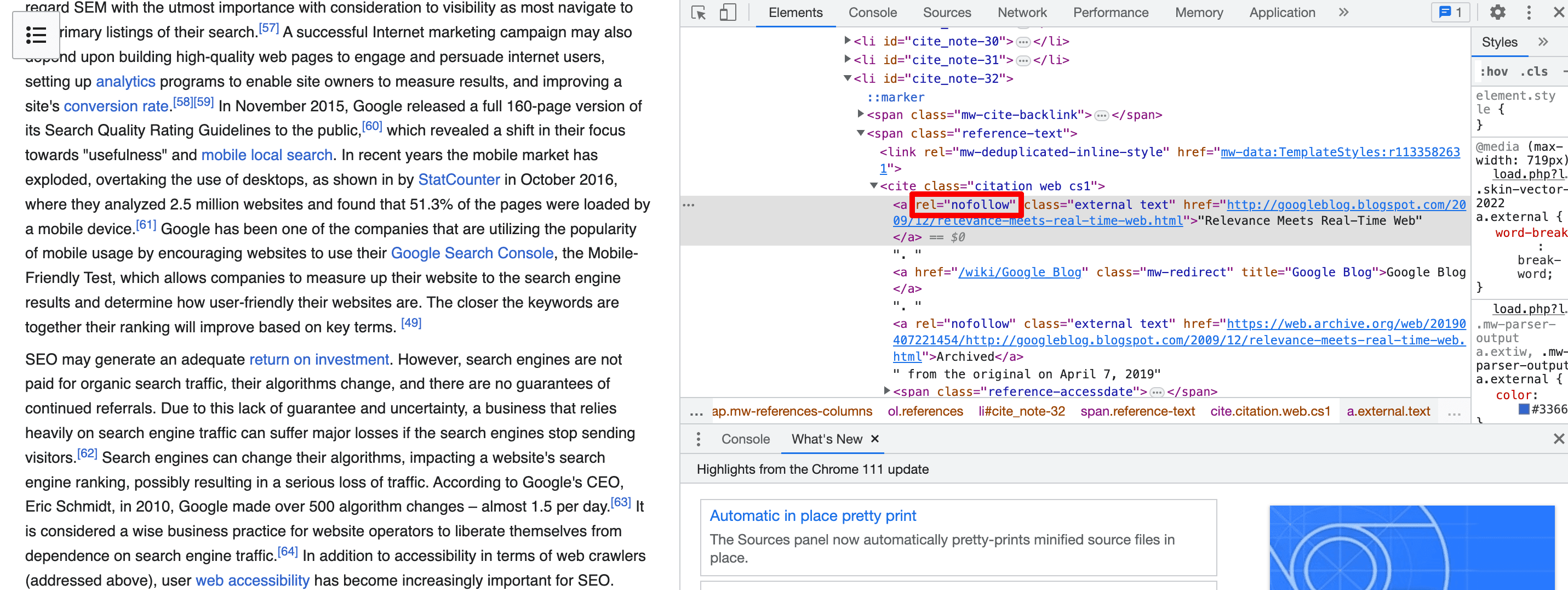
Whether or not these backlink types impact your rankings is a controversial topic, but there’s no doubt that they can increase your referral traffic and brand awareness. Plus, they can help you build a natural and diverse backlink profile. Having a dofollow-only backlink profile will raise the suspicions of search engines because it might seem that all links are paid and agreed on instead of being earned by the quality of the content itself.
16. Backlinks with the rel=”sponsored” attribute
The rel=“sponsored” attribute is also used for paid links, indicating that the link is a paid placement and not organic. To avoid being flagged for a link scheme violation, Google recommends using this attribute to specify that the backlinks were purchased for advertising purposes.
While the nofollow attribute was previously recommended for these types of links, “sponsored” is now the preferred option.
Sponsored backlinks can appear in various places, such as paid guest posts, press releases, news articles, sidebar or header ads, and in the footer. For example:
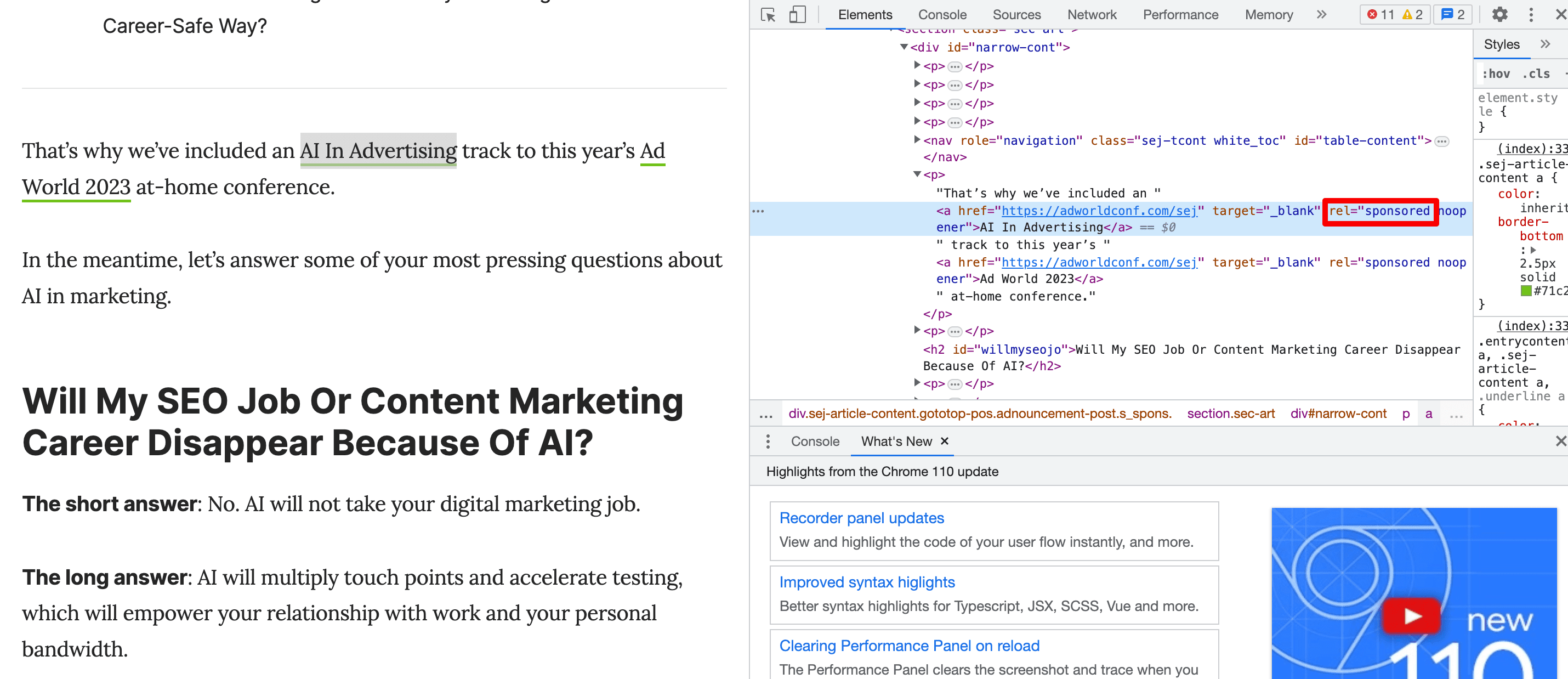
Since these backlinks don’t pass link juice like nofollow ones do, they can be more useful for building brand awareness and driving referral traffic rather than for SEO.
17. Backlinks with the rel=”ugc” attribute
User-generated backlinks with the rel=”ugc” attribute signal to search engines that the content was generated by website users. These links refer to comments, forum posts, reviews, or other types of user-submitted content.

The UGC attribute doesn’t significantly impact a website’s SEO rank but adding the UGC attribute is still good practice because it ensures that your website remains unpenalized. Comment links are usually spammy links associated with grey-hat SEO, so again, applying the UGC attribute safeguards you against this penalty.
Backlink types depending on their position on the website
Another point that cannot be overlooked is the link’s location on the website. The placement of a backlink can impact its SEO value, whether it’s in the text, image, widget, footer, or header. Let’s take a look at the features of each placement.
18. Links in text content
This is the most common and the most natural way for a backlink to be located. It’s also the best way to get a backlink in terms of SEO, as such a link has surrounding text that provides additional context for it that’s supplementary to the anchor text. However, do not forget to ensure that the text around the link is relevant.
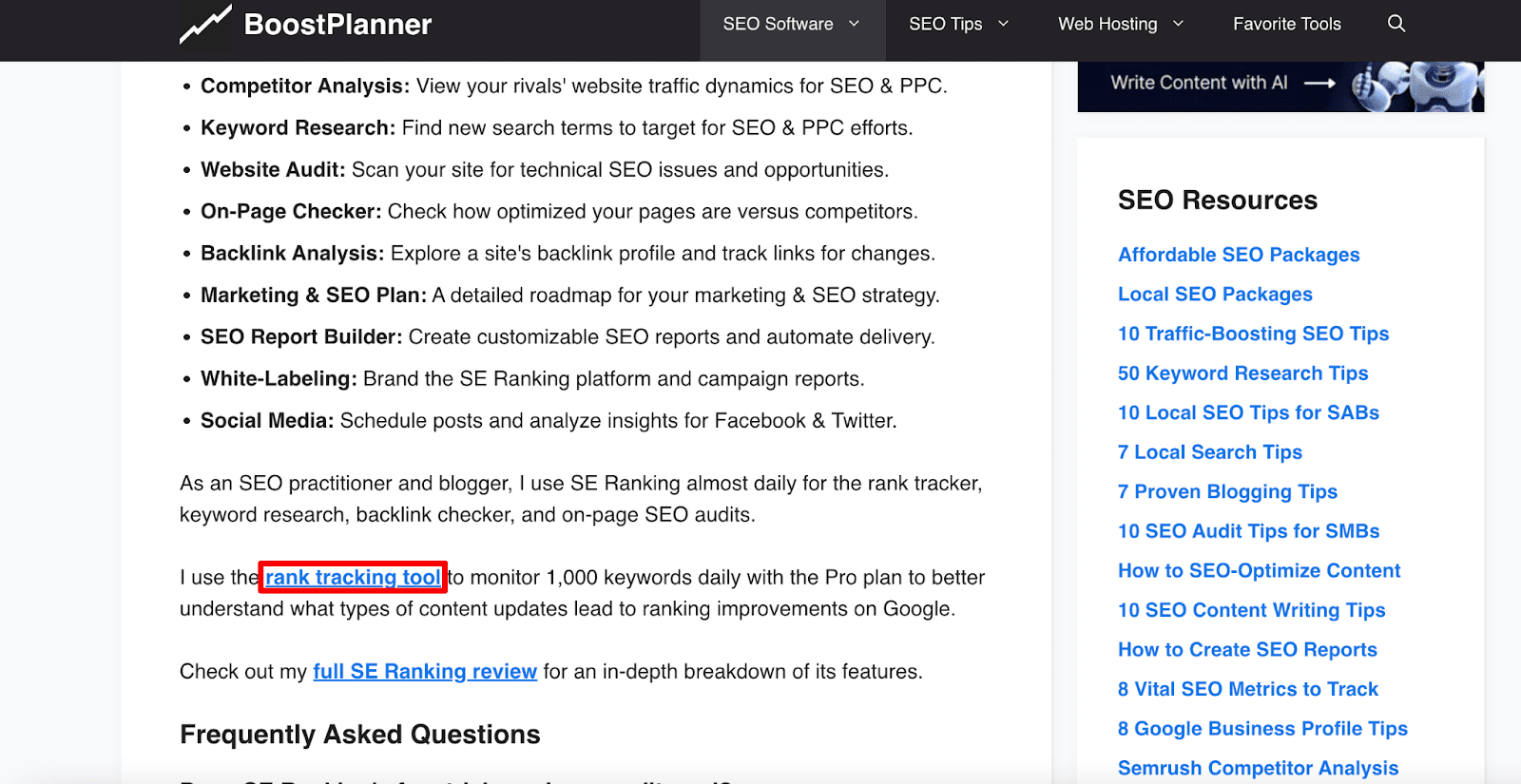
19. Links inside images
SEOs occasionally use images as links. For instance, you have likely seen clickable banners in the sidebar, in the header or in the middle of the page. These can also be in the form of a linked image located somewhere in the body text. Here’s what the HTML code of the image looks like with the link:
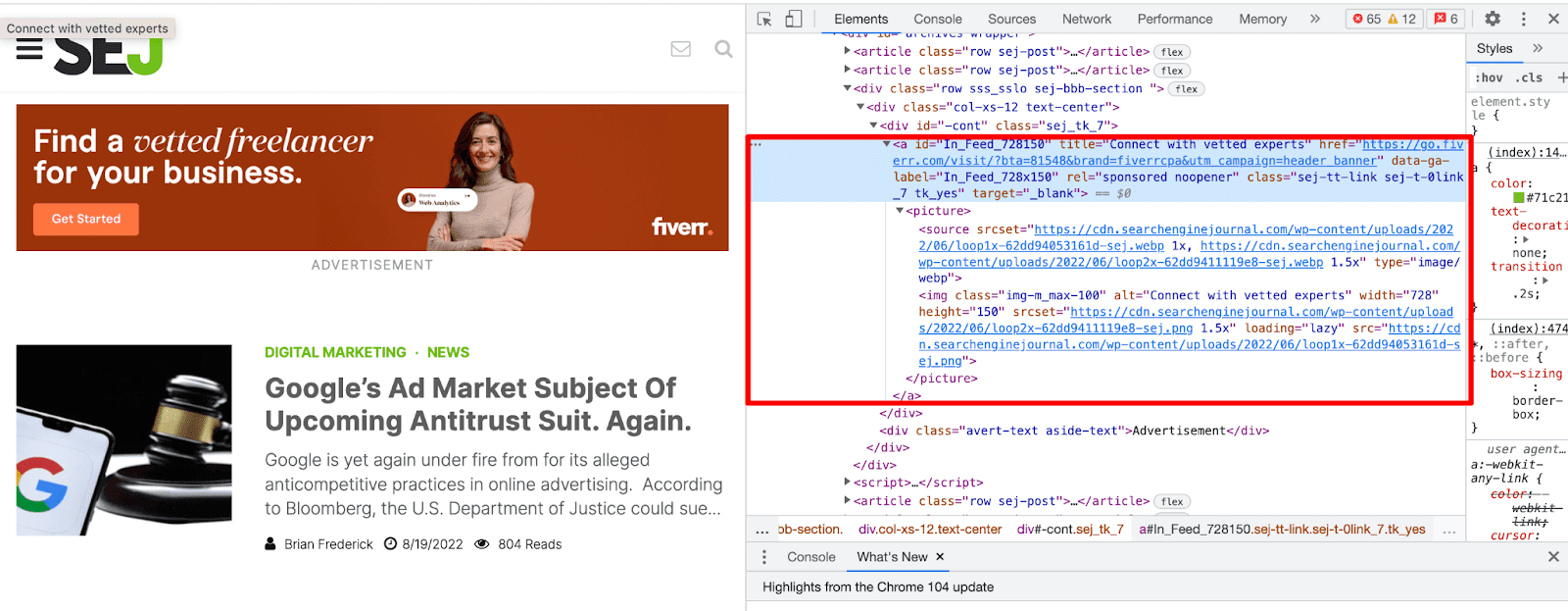
Keep in mind that text links tend to perform better and carry more weight than image links with alt attributes. Let’s break it down in more detail.
One of the primary parameters that Google considers when evaluating the relevance and value of backlinks is the anchor text and its context, which includes the relevance of the surrounding text. However, images don’t have textual context, making it more difficult for search engines to determine link relevance.
Plus, images are often placed in the secondary content area, such as a sidebar, where links have less weight than those in the main content.
Google recommends using text instead of images to display important names, content, or links, so if you must use images for textual content, use the alt attribute to include a few words of descriptive text.
20. Links in the footer
A footer, which is the area at the bottom of a website, is a commonly used location for clients’ and partners’ backlinks. But how valuable are they, really?
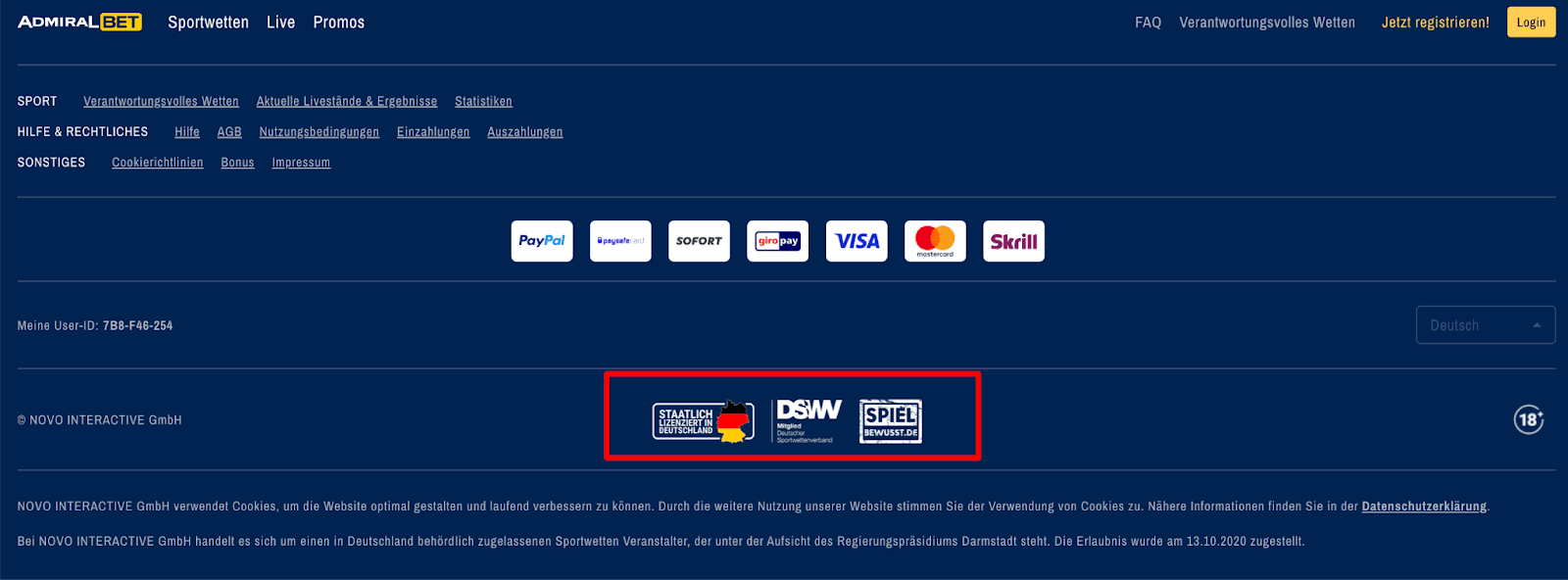
Footer links are typically given less weight than text links and are considered secondary in terms of importance. Furthermore, since these links are often the least visible on your page, as not many people scroll down to them, they tend to receive less traffic.
21. Links in the widget
A widget is a web-based mini-app containing a link to your website.
The widget you provide will be in an HTML code, which can be provided to the website that you want to share your link with. They will embed the HTML code on the agreed upon (and hopefully) relevant page.
For instance, a sports betting website can place its widget on a popular soccer blog with relevant odds for an upcoming match. By clicking on your widget, users will be brought to your website.
Numerous companies offer widgets specifically for backlinking, but you need to be careful with widget links. If they are not naturally placed, they can be considered a violation of the Google Webmaster Guidelines. Here’s a perfect example of what not to do:

Final words
Being aware of the various SEO backlink types is a crucial step in finding the most effective ones for your link building strategy. Remember that your link building profile should be diverse, but it should primarily consist of organic backlinks earned through high-quality content.
When working on your backlink profile, always consider your goals for placing the link on a specific resource. Will it bring quality traffic, increase brand awareness; or improve your Page Rank? When all is said and done, keep in mind that gaining links (and a lot of them) should never be your goal by itself! Do not participate in link schemes as Google will disregard them or even apply penalties against you.

